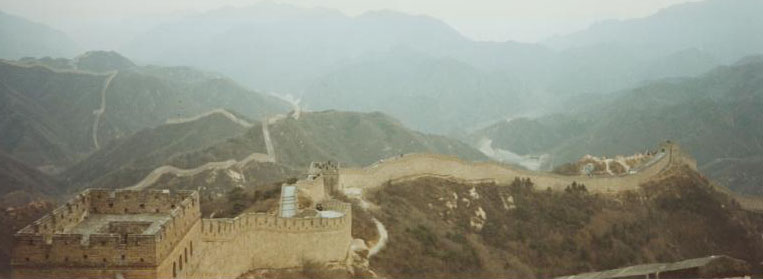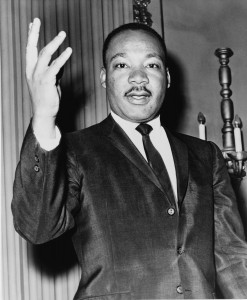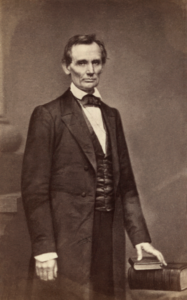 On January 23, 1864, Lincoln sent to the U.S. Senate papers relative to the modification of our treaty with China. China had been an important, but sometimes difficult, relationship during the Civil War. While he didn’t spend that much time on it, Lincoln did have several interactions and official duties. In this 1864 letter, he writes:
On January 23, 1864, Lincoln sent to the U.S. Senate papers relative to the modification of our treaty with China. China had been an important, but sometimes difficult, relationship during the Civil War. While he didn’t spend that much time on it, Lincoln did have several interactions and official duties. In this 1864 letter, he writes:
To the Senate of the United States: January 23, 1864I transmit to the Senate a copy of a dispatch of the 12th. of April, last, addressed by Anson Burlingame, Esquire, the Minister of the United States to China, to the Secretary of State, relative to a modification of the 21st. article of the Treaty between the United States and China of the 18th. of June 1858, a printed copy of which is also herewith transmitted. These papers are submitted to the consideration of the Senate with a view to their advice and consent being given to the modification of the said Twenty-first article as explained in the said dispatch and its accompaniments.
Washington, 23d. January, 1864. ABRAHAM LINCOLN
Burlingame had previously notified Lincoln that the existing agreement signed in 1858 needed to be modified “as to permit duties to be paid when goods are re-exported from any one of the free ports of China….” The U.S. Senate consented to the modification in February 1864. Lincoln had reported in his annual addresses to Congress in December 1861, 1862, and 1863 that “very favorable relations also continue to be maintained with Turkey, Morocco, China, and Japan.” However, by 1864, Lincoln was reporting that a rebellion in China was causing some level of concern. “The judicial consular establishment there has become very difficult and onerous, and it will need legislative revision to adapt it to the extension of our commerce, and to the more intimate intercourse which has been instituted with the government and people of that vast empire. China seems to be accepting with hearty good-will the conventional laws which regulate commercial and social intercourse among the western nations.
Burlingame served as Minister to China from 1862 to 1867. He had originally been assigned by Lincoln to Austria but the government there rejected him because of his opinions on Hungary and Sardinia, then at odds with Austria, and so was appointed to China instead.
Back in the 1850s, Burlingame had become embroiled in the infamous caning of Charles Sumner incident. A former Know Nothing, he had joined the newly formed Republican Party along with Lincoln. After South Carolina Representative Preston Brooks brutally beat Massachusetts Senator Charles Sumner nearly to death, Massachusetts Representative Burlingame delivered his “most celebrated speech,” a scathing denunciation of Brooks, who he denounced as “the vilest sort of coward.” Not surprisingly, the violent Brooks challenged Burlingame to a duel, which Burlingame eagerly accepted. As the challenged party, and an expert marksman, he chose rifles and the Canadian side of Niagara Falls (dueling was illegal in the United States). Brooks chickened out. The non-duel, along with his defense of a fellow Bostonian, greatly raised Burlingame’s stature in the North. Lincoln recognized this and thus sought to appoint him to an important ambassadorship. Hence his move to China.
The last apparent mention of Lincoln’s interactions with China was on February 17, 1865, when he approved an act to authorize the establishment of ocean mail service between the U.S. and China.
[Photo of the Great Wall of China by David J. Kent, December 2000]

Lincoln: The Fire of Genius: How Abraham Lincoln’s Commitment to Science and Technology Helped Modernize America is available at booksellers nationwide.
Limited signed copies are available via this website. The book also listed on Goodreads, the database where I keep track of my reading. Click on the “Want to Read” button to put it on your reading list. Please leave a review on Goodreads and Amazon if you like the book.
You also follow my author page on Facebook.
David J. Kent is President of the Lincoln Group of DC and the author of Lincoln: The Fire of Genius: How Abraham Lincoln’s Commitment to Science and Technology Helped Modernize America and Lincoln: The Man Who Saved America.
His previous books include Tesla: The Wizard of Electricity and Edison: The Inventor of the Modern World and two specialty e-books: Nikola Tesla: Renewable Energy Ahead of Its Time and Abraham Lincoln and Nikola Tesla: Connected by Fate.



 As we celebrate the birth of Dr. Martin Luther King, MLK, it’s impossible not to reminisce on the connection with Abraham Lincoln, ABE. The two men are linked forever because of Lincoln’s emancipation proclamation and King’s reference to it in his “I have a dream” speech.
As we celebrate the birth of Dr. Martin Luther King, MLK, it’s impossible not to reminisce on the connection with Abraham Lincoln, ABE. The two men are linked forever because of Lincoln’s emancipation proclamation and King’s reference to it in his “I have a dream” speech. On January 5, 1858, Abraham Lincoln wrote to Robert A. Kinzie of Chicago regarding the case of Johnston v. Jones and Marsh, commonly called the Sand Bar Case. The case was revealing because, in an age where trial transcripts were almost never kept, journalist Robert Hitt was paid to sit through the entire trial and create a comprehensive 482-page trial transcript, although he omitted the closing arguments.
On January 5, 1858, Abraham Lincoln wrote to Robert A. Kinzie of Chicago regarding the case of Johnston v. Jones and Marsh, commonly called the Sand Bar Case. The case was revealing because, in an age where trial transcripts were almost never kept, journalist Robert Hitt was paid to sit through the entire trial and create a comprehensive 482-page trial transcript, although he omitted the closing arguments.






